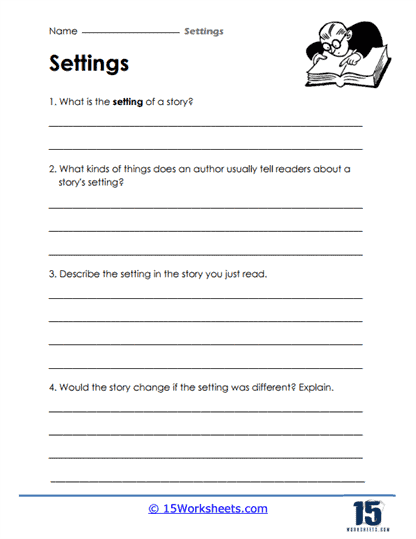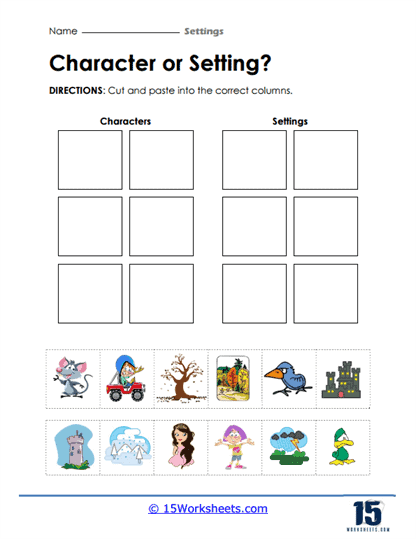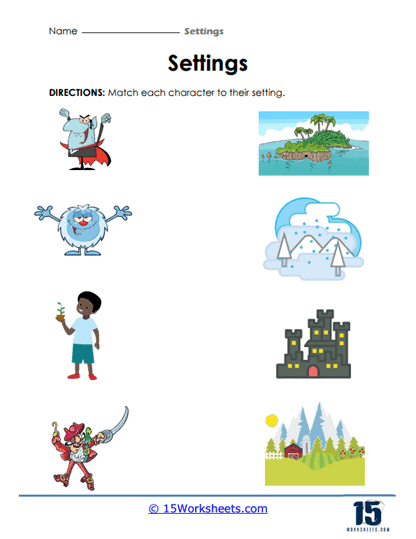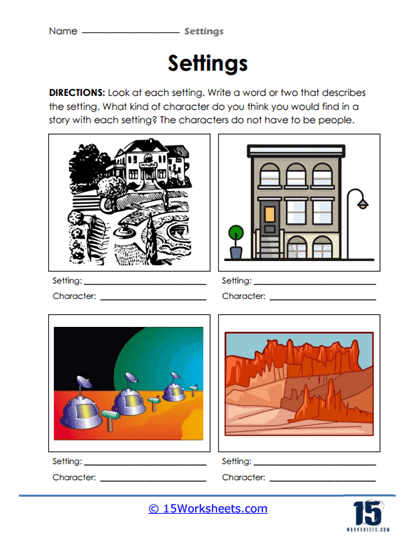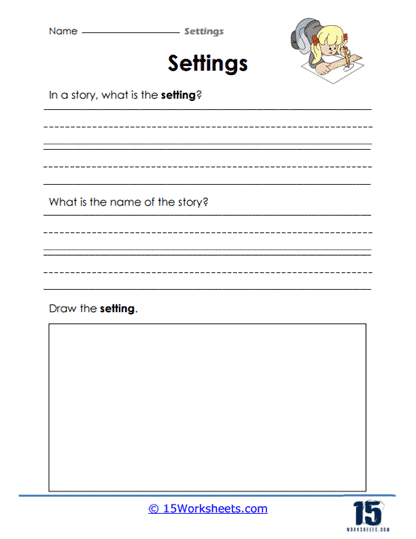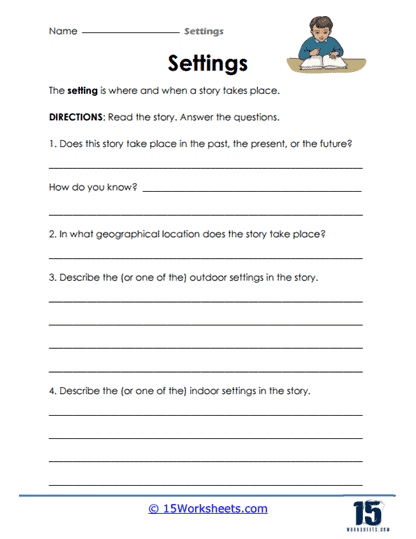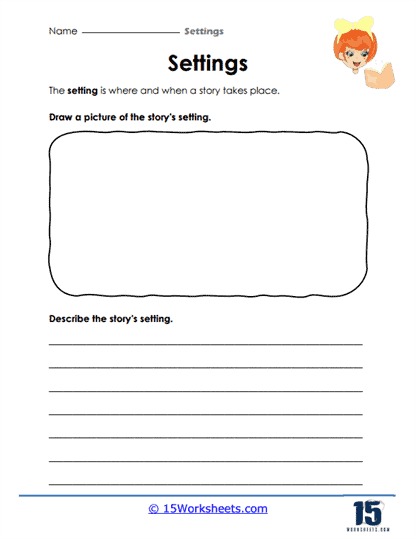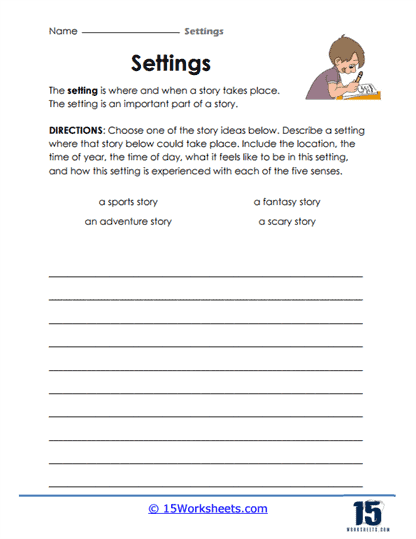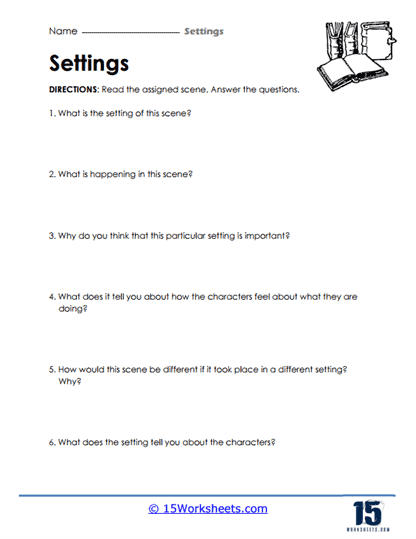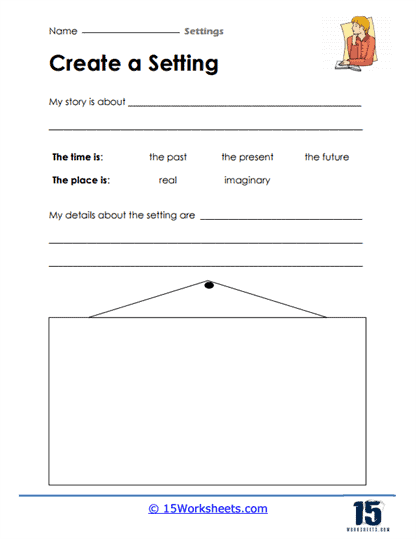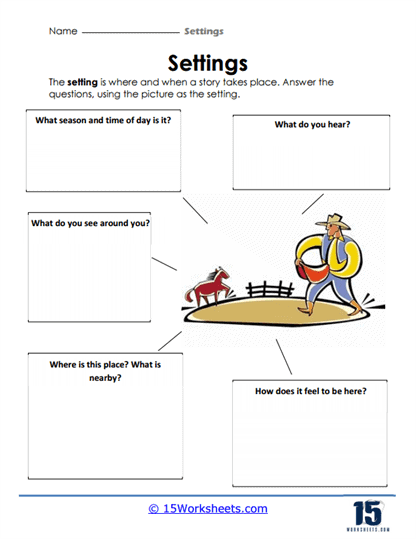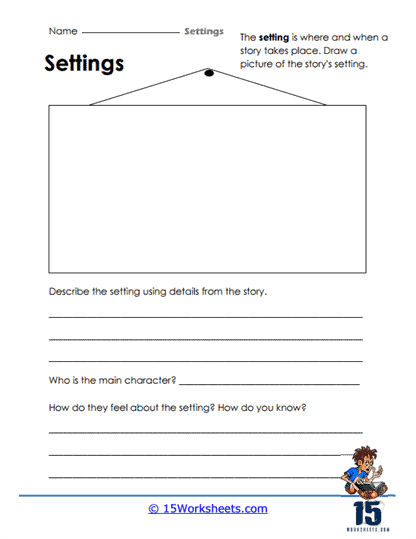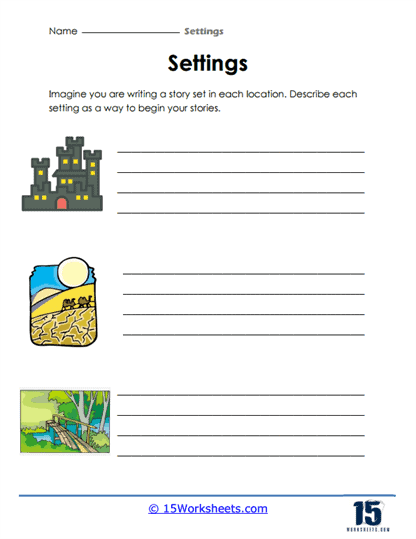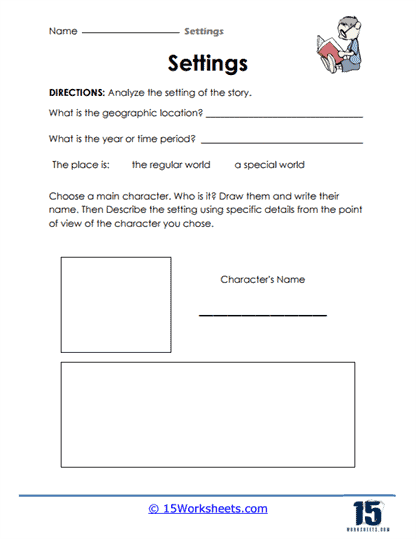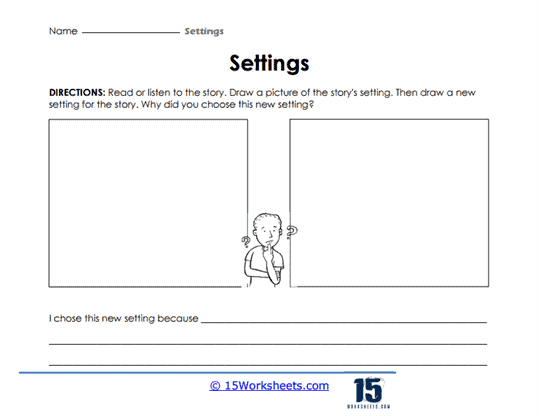Settings Worksheets
All About These 15 Worksheets
These worksheets are designed to help students develop their understanding of where and when the events in stories take place, and how these settings relate to the characters and the plot. These worksheets include a variety of activities that encourage critical thinking and analysis of the story’s setting.
Some of the activities that are included in these worksheets involve:
- Identifying the setting – Students are asked to identify the time and place in which a story takes place.
- Analyzing the impact of the setting – Students are encouraged to analyze how the setting affects the characters and the plot of the story. For example, the weather, geography, or culture of a particular setting can have a significant impact on the events of the story.
- Describing different settings – Students are asked to describe different settings and to analyze how their observations taken from these settings can help them write a beginning to their own story.
- Creating their own settings – Students are encouraged to use the skills they’ve learned to create their own new settings for a story, and to think about how these settings would affect the characters and the plot.
Overall, these worksheets can help students to develop a deeper understanding of the role of setting in a story, and to appreciate the ways in which the setting can affect the characters and the plot. By analyzing the impact of setting on a story, students can become more engaged and critical readers, and develop their own skills as writers.
What are Settings and why do they matter?
Settings in a story refer to the time and place where the story takes place. The setting can play a significant role in a story, as it can affect the mood, tone, and overall meaning of the narrative. By studying settings, students can gain a deeper understanding of a story and its themes, as well as develop important critical thinking skills. Here are some of the benefits that analyzing settings in a story can provide for students:
- Improved reading comprehension – Analyzing settings can help students to better understand the events of a story, as the setting often provides important context and background information that can aid in comprehension.
- Appreciation for literary techniques – By analyzing the ways in which authors use setting to convey meaning and affect the mood and tone of a story, students can gain a deeper appreciation for the literary techniques used in storytelling.
- Development of critical thinking skills – Studying settings requires students to engage in critical thinking and analysis, as they must consider the ways in which the setting affects the characters and the plot.
- Deeper engagement with the text – By studying settings, students can become more engaged with the text and develop a greater appreciation for the art of storytelling.
Studying settings in a story can help students to become more engaged and effective readers, and to develop their own skills as writers. By analyzing the impact of settings on a story, students can gain a deeper understanding of the narrative and the techniques used by authors to convey meaning and create compelling stories.

